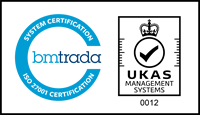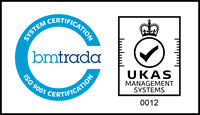Posted on: Monday April 01, 2019

And what other options are available for your employees.
As traditional employment has now evolved to include homeworking, remote working, flexible hours and job sharing, previous forms of employee communications are increasingly redundant. Consumer communications have changed over recent years and brands no longer rely on billboards or adverts to make their announcements, leading modern businesses to be more creative in their approach. Now brands can personalise depending on the consumer and their needs, leading to a higher level of engagement.
Unfortunately, it seems as though internal communications have not followed suit, with employers still sharing information with employees as a company announcement or a physical newsletter. These methods are personalised to an extent, but not personalised enough to effectively communicate with and engage today’s dispersed workforce. However, there are plenty of alternatives to traditional comms, such as online newsletters, employee forums and app based push notifications.
Arguably the most time-consuming task in any workplace is writing emails. According to Statista, in 2017, global email users amounted to 3.7 billion. Using alternatives to paper comms can save UK businesses up to £10,000 per year, so it is unsurprising that emails are such a widely used communications tool.
If emails are less effective for your business, online newsletters that can be read at employee leisure are also a great communication tool. These engage staff in and out of the office but can be used as a wealth of knowledge for your staff. However, it seems that staff are getting overloaded with email communications, and in recent years there has been a distinct movement away from email-based comms.
With the creation of an employee engagement app, you can communicate better to all of your employees, wherever they are. With an employee engagement app, they can be sent push notifications right to the palm of their hand. Push notifications have a 50% higher opening rate than emails, and employee voice through forums can be just as effective (E-goi, 2018). While email can be an effective communications tool, when it comes to employees that don’t work in an office or have a job away from a computer, employers need to get even more creative with internal comms.
When it comes to employee engagement, the return on investment is key. While employers should invest in their employee wellbeing simply because it is the right thing to do, the simple fact is, engaged employees are good for business. Decision-Wise found that companies with highly engaged employees have earnings-per-share levels 2.6 times higher than companies with low engagement scores. When it comes to engaging staff, it seems it can not only improve happiness and productivity but can improve earnings. It was also found that highly engaged employees are 87% less likely to leave the organization, which will ultimately save the business time and money.
If you want to know more about how communication techniques affect your employees, check out the video below.
Cost vs Value – What Really Matters in Health Benefits?
When it comes to creating employee health benefits, there’s always a tug-of-war between keeping costs low and focusing on the actual value those benefits bring.
Posted on: 11 April 2025 by Andrew Walker, New Business Development Director
Top Tips to Improve a Misfiring Recognition Strategy
Whether you’re a professional footballer, engineer or care worker, happiness at work relies on feeling valued, appreciated and respected.
Posted on: 28 March 2025 by Andrew Walker, New Business Development Director
Brace Yourselves: Reward Storm Incoming
In even the most optimistic assessment of the current situation, it is hard to foresee a situation where a substantial portion of workers are not left underwhelmed by their pay offers in 2025.
Posted on: 13 March 2025






